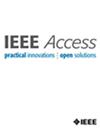具有更高线路负载性的革命性非常规输电线路设计
IF 3.6
3区 计算机科学
Q2 COMPUTER SCIENCE, INFORMATION SYSTEMS
引用次数: 0
摘要
传统上,架空交流输电线路用于将电力从发电部门传输到配电部门。这些线路的电容和电感受每一相中子导体的尺寸和排列的显著影响,进而影响传输容量。传统的传输线通常采用圆形对称来布置每一相的子导体。然而,通过改变这些子导体的数量和位置,线路的电力传输能力可以显着增加。非常规传输线通过偏离传统的圆形对称来利用这一原理,导致较低的特性或浪涌阻抗($Z_{c}$),从而增强了浪涌阻抗负载(SIL)。本文介绍了非常规输电线路的新设计,根据严格的标准进行优化,以最大限度地减少电晕放电效应,同时保持狭窄的走廊宽度(CW)。与文献中的传统传输线(SIL为996 MW,线宽24.6米,功率密度为40.5 MW/m)相比,我们优化设计的传统HSIL线路的SIL为1351 MW(增加36%),线宽仅为8.4米(减少66%),功率密度为160.8 MW/m(增加297%)。采用非常规HSIL设计可以观察到更大的改进,SIL达到1592 mw,比传统线路提高了60%,比最佳传统HSIL设计提高了18%。这些发现为现代传输网络的未来提供了良好的前景。本文章由计算机程序翻译,如有差异,请以英文原文为准。
Revolutionary Unconventional Transmission Line Designs With Higher Line Loadability
Traditionally, overhead AC transmission lines have been used to transfer electrical power from the generation to the distribution sector. The capacitance and inductance of these lines are significantly influenced by the size and arrangement of the subconductors in each phase, which in turn affects the transmission capacity. Conventional transmission lines typically employ a circular symmetry for the arrangement of subconductors in each phase. However, by altering the number and placement of these subconductors, the power transfer capacity of the lines can be significantly increased. Unconventional transmission lines leverage this principle by deviating from the traditional circular symmetry, resulting in a lower characteristic or surge impedance ( $Z_{c}$ ), which enhances the surge impedance loading (SIL). This paper introduces new designs for unconventional transmission lines, optimized under strict criteria to minimize corona discharge effects while maintaining a narrow corridor width (CW). Compared to a conventional transmission line from the literature—with a SIL of 996 MW and a line width of 24.6 meters (yielding a power density of 40.5 MW/m)—our optimally designed conventional HSIL line achieves a SIL of 1351 MW (a 36% increase) and a line width of only 8.4 meters (a 66% reduction), resulting in a power density of 160.8 MW/m (a 297% increase). Even greater improvements are observed with unconventional HSIL designs, reaching a SIL of 1592 MW—representing a 60% increase over the conventional line and an 18% improvement over the best conventional HSIL design. These findings offer promising prospects for the future of modern transmission networks.
求助全文
通过发布文献求助,成功后即可免费获取论文全文。
去求助
来源期刊

IEEE Access
COMPUTER SCIENCE, INFORMATION SYSTEMSENGIN-ENGINEERING, ELECTRICAL & ELECTRONIC
CiteScore
9.80
自引率
7.70%
发文量
6673
审稿时长
6 weeks
期刊介绍:
IEEE Access® is a multidisciplinary, open access (OA), applications-oriented, all-electronic archival journal that continuously presents the results of original research or development across all of IEEE''s fields of interest.
IEEE Access will publish articles that are of high interest to readers, original, technically correct, and clearly presented. Supported by author publication charges (APC), its hallmarks are a rapid peer review and publication process with open access to all readers. Unlike IEEE''s traditional Transactions or Journals, reviews are "binary", in that reviewers will either Accept or Reject an article in the form it is submitted in order to achieve rapid turnaround. Especially encouraged are submissions on:
Multidisciplinary topics, or applications-oriented articles and negative results that do not fit within the scope of IEEE''s traditional journals.
Practical articles discussing new experiments or measurement techniques, interesting solutions to engineering.
Development of new or improved fabrication or manufacturing techniques.
Reviews or survey articles of new or evolving fields oriented to assist others in understanding the new area.
 求助内容:
求助内容: 应助结果提醒方式:
应助结果提醒方式:


